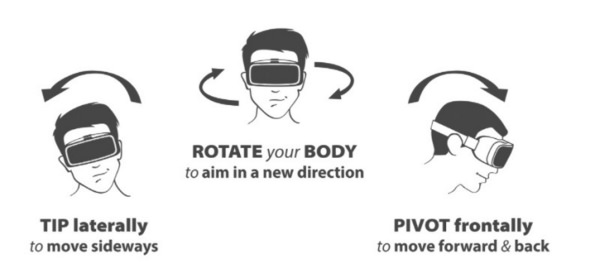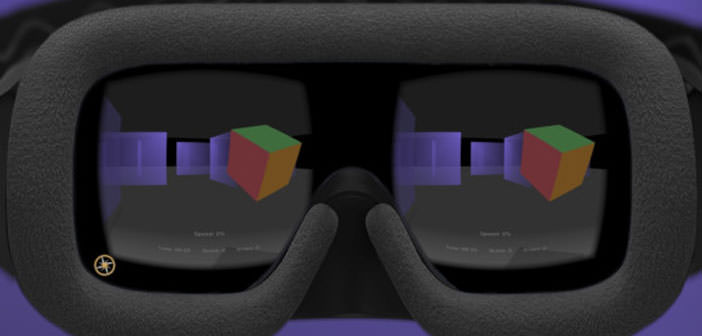BodyNav, a system that allows you to move in VR without hassle using the body
MonkeyMedia, a small technology company from Austin, has worked extensively to solve the problem of motion sickness with virtual reality.
BodyNav by MonkeyMedia is a system designed to allow you to explore the spaces in virtual reality in the most natural way possible. In fact, you do not need controllers to keep in your hands, but you move in VR with simple and instinctive movements of the head or other parts of the body like the torso.
In fact, it is the divergence between the input given through the controller and the involvement in the experience of virtual reality that causes discomfort and motion sickness, making this kind of experiences impossible to live in a prolonged way.
BodyNav leads the user to move parts of the body in sync with the movement in the virtual environment: for example, tilt the head forward to walk straight. This synchrony avoids the occurrence of motion sickness, according to Bear and Rachel Strickland, inventors of the system.
 BodyNav technology remaps the control axes to manage the locomotion in VR through body movements and does not require dedicated hardware. The software acquires the data coming from the sensory receptors, and this allows it to interact correctly with the virtual or remote contents, synchronizing the visual and vestibular senses (inner ear) and reducing the sensory imbalances, preserving the equilibrium in the proprioceptive system of the body.
BodyNav technology remaps the control axes to manage the locomotion in VR through body movements and does not require dedicated hardware. The software acquires the data coming from the sensory receptors, and this allows it to interact correctly with the virtual or remote contents, synchronizing the visual and vestibular senses (inner ear) and reducing the sensory imbalances, preserving the equilibrium in the proprioceptive system of the body.
MonkeyMedia is a small team that has been conducting virtual reality experiments for 25 years. The company has already filed seven patents on its invention, while two others are waiting to be approved.
The sensors that are inside the current VR viewers, such as accelerometers and gyroscopes, are already able to detect the movements of the head: some shooters, in fact, use them to manage some phases of the game, as the protrude beyond a cover.
BodyNav simply resumed these concepts and refined them, inserting them into new patterns of play. Raising the user from having to use the fingers on the controller avoids that ” cognitive overload ” that makes the experience of virtual reality less immersive, as well as generating the hassles.
This system, too, goes very well with haptic gloves that are becoming more and more popular. Freeing the hands from the interactions at the base of physical movements, these can be used for other purposes such as aiming and firing. The combination of the two, of course, produces a much more immersive experience than today.
BodyNav will soon be available to video game developers, with a programming interface that will allow you to easily implement this control system within the various titles. In addition, it can also be used with drones or with piloting experiences of various kinds, for which, like video games, there can be annoyances of motion sickness type.
Using head or torso movements to manage movements in virtual reality is a technique that has been working since the 1990s. Strickland, in fact, has already used techniques of this kind for virtual visits to museums, but now it can exploit its know-how in a more capillary way by using the much more precise viewers of modern virtual reality.

